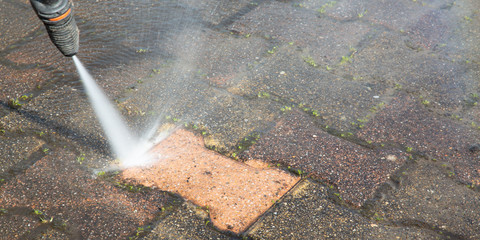Getting the right financial advice can make all the difference. It’s worth taking the time to shop around and learn how to recognize red flags that could signal a phony adviser looking to exploit you.
Check whether they’re fiduciaries and only make suitable recommendations or if they earn commissions from selling high-commission products. Then, find out how to assess their credentials and experience. Contact Financial Advisor Nashville TN for professional help.
Most financial advisors have earned the right to help manage the finances of their clients by going through a rigorous education and licensing process. They must have a solid understanding of the market, as well as their clients’ needs and goals. A financial advisor must also be able to perform thorough research, gather and analyze data quickly and effectively, and communicate clearly.
Potential financial advisors typically start their careers with a bachelor’s degree in subjects like finance, economics, accounting and business. Depending on their career aspirations, some may even pursue a master’s degree to improve their prospects and increase their expertise in the field. Getting hands-on experience in the industry through internships and entry-level positions is another way for students to gain the knowledge and skills needed to succeed as financial professionals.
Financial planning and investment management are the primary duties of a financial advisor. They can offer advice and recommendations on various investments, including mutual funds, stocks, bonds and real estate. They can also provide services on wealth preservation, retirement, tax-efficient investing and insurance strategies. They are also required to have a Series 6, 7, or 63 license, which allows them to sell securities.
Licensing is important for financial advisors, as it demonstrates their commitment to professionalism and compliance with industry regulations. Obtaining these licenses can be a long and winding road that includes passing rigorous exams and meeting specific educational and work experience requirements. Many financial advisors also choose to earn professional certifications, such as the CERTIFIED FINANCIAL PLANNER(r) (CFP) designation.
A financial planner must have strong interpersonal skills to communicate with clients and understand their unique concerns. They must also be detail-oriented and analytical, as a single mistake could significantly impact a client’s future. Moreover, financial planners must have the ability to develop and implement comprehensive plans for their clients.
Finally, financial advisors must be able to convert marketing leads into new customers. A 2024 Broadridge survey found that it takes an average of 3.6 months for an advisor to convert a prospect into a paying client. To expedite this process, SmartAsset AMP offers a holistic and automated approach to client acquisition by matching advisors with high-intent investors and making live over-the-phone calls to nurture them into qualified prospects.
Experience
Financial Advisors help people create and execute financial plans for short- and long-term goals. They can assist with investing, budgeting and debt management, retirement planning, education savings and wealth management. The best Financial Advisors will have a deep understanding of all aspects of finance and be well-versed in how to navigate complex investment strategies and tax laws. They should also be able to provide unbiased advice and guidance.
It’s important to find out if your Financial Advisor is a fiduciary or not. Fiduciaries have an ethical duty to act in your best interests at all times. They are paid only by the fees you pay for their services. Those fees are usually based on the assets they manage for you, or a flat hourly or annual fee. This is a better model than commission-based financial advisors, who may earn commissions from selling you certain financial products, such as mutual funds and insurance policies.
While a fiduciary may not be the right choice for everyone, it’s important to know your options. When selecting a Financial Advisor, consider how many years of experience they have and what types of clients they work with. You should also review their professional designations, which can give you a good idea of their level of training and areas of expertise.
Once you’ve narrowed down your choices, it’s time to meet with your candidates and see how they measure up. Look for an Advisor who can answer your questions clearly and concisely, and who you feel comfortable discussing your financial situation with. During your meeting, ask about their approach to investing and how they’ll help you achieve your goals.
Many financial Advisors are certified financial planners (CFP). This certification requires them to pass a comprehensive exam and adhere to a code of ethics. CFPs are able to offer comprehensive financial planning services, including investment advice, estate planning and taxes. In addition to advising on investment strategies, CFPs can also help you establish a budget, save for children’s college tuition and plan for emergencies. They can even provide tax planning services, although they are not trained to file your tax returns or fully understand the intricacies of tax law like a CPA.
Fees
A financial advisor’s fees and commissions can vary. Some charge a flat fee, while others use an asset-based model or subscription-like services to bill monthly or annually for services. Some even use a combination of these methods. It is important to understand what fees you are paying and how they may impact your long-term financial planning. The upfront cost of working with a qualified financial advisor may seem high, but the value they provide in areas such as tax optimization, investment strategies, and retirement planning will often outweigh their initial costs over time.
Some financial advisors also earn compensation through commissions from selling various financial products, including mutual funds, annuities, and life insurance policies. This type of compensation can add up quickly, especially when it comes to hidden fees and charges that may be attached to these products. These fees can include upfront sales charges, or loads, on mutual funds, deferred sales charges, or 12b-1 fees on brokerage accounts, as well as surrender and early withdrawal penalties associated with certain products.
The most common form of compensation for financial advisors is a percentage of the assets they manage for their clients. This type of fee structure is sometimes known as an AUM fee, or “assets-under-management” fee. This type of fee structure is typically the most transparent and straightforward, but it can also be difficult to compare fees between different financial advisors. A good way to compare AUM fees is to look at the performance metrics that each advisor provides, as well as their experience and qualifications.
Many clients are concerned about the cost of working with a financial advisor, especially when fees are a significant portion of their total net worth. This concern is valid, and it’s essential that you work with an advisor who can clearly explain their fees and the value they provide to their clients. Advisors who can demonstrate the effectiveness of their services – for example, by demonstrating that they have outperformed the S&P 500 or comparable benchmarks – can often justify higher fees than those of their competitors.
Commitment
Financial Advisors, whether they work as independent contractors or representatives of a large firm, must commit to their clients. A happy client keeps coming back and may refer other people to the advisor, making it even more important for them to provide a high level of service. This can include being available for questions, providing regular meetings, and responding quickly to emails or phone calls. A recent report by Vanguard found that the best advisors are focused on relationships and providing a high level of personal attention to their clients.
A good financial planner can help clients develop a vision of their financial future that is personalized and aspirational, considering each client’s individual values, goals, and dreams. This vision can inspire and motivate them to take proactive steps to achieve their financial goals. This type of leadership quality is a key factor that many clients seek in an advisor.
These advisors are also dedicated to their craft and are insatiably curious about the mechanisms of the markets, historical trends, and emerging trends. They don’t just want to know about things, though; they want to understand how they can be used to help their clients make smarter decisions. In addition, they are not afraid to be wrong. They believe that they owe it to their clients and referral advocates to have a thoughtful opinion and be willing to share it with others.
The results of this study suggest that the antecedents of trust and commitment, as measured by the model, explain 77 percent of the variance in both trust and relationship commitment. These antecedents are communication abilities, an absence of opportunistic behavior, perceived relationship benefits, the costs of terminating the relationship, and shared values. Moreover, the results of this research support the theory that it is more important for advisors to focus on developing trust and commitment than on technical skills like generating high investment returns or tax-saving strategies.
Another way that advisors can demonstrate their commitment to their clients is by ensuring that they don’t charge excessive fees. This includes avoiding hidden charges and limiting commissions. They can also disclose all fees upfront and provide a written step-by-step plan to help clients implement their recommendations.









